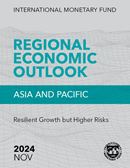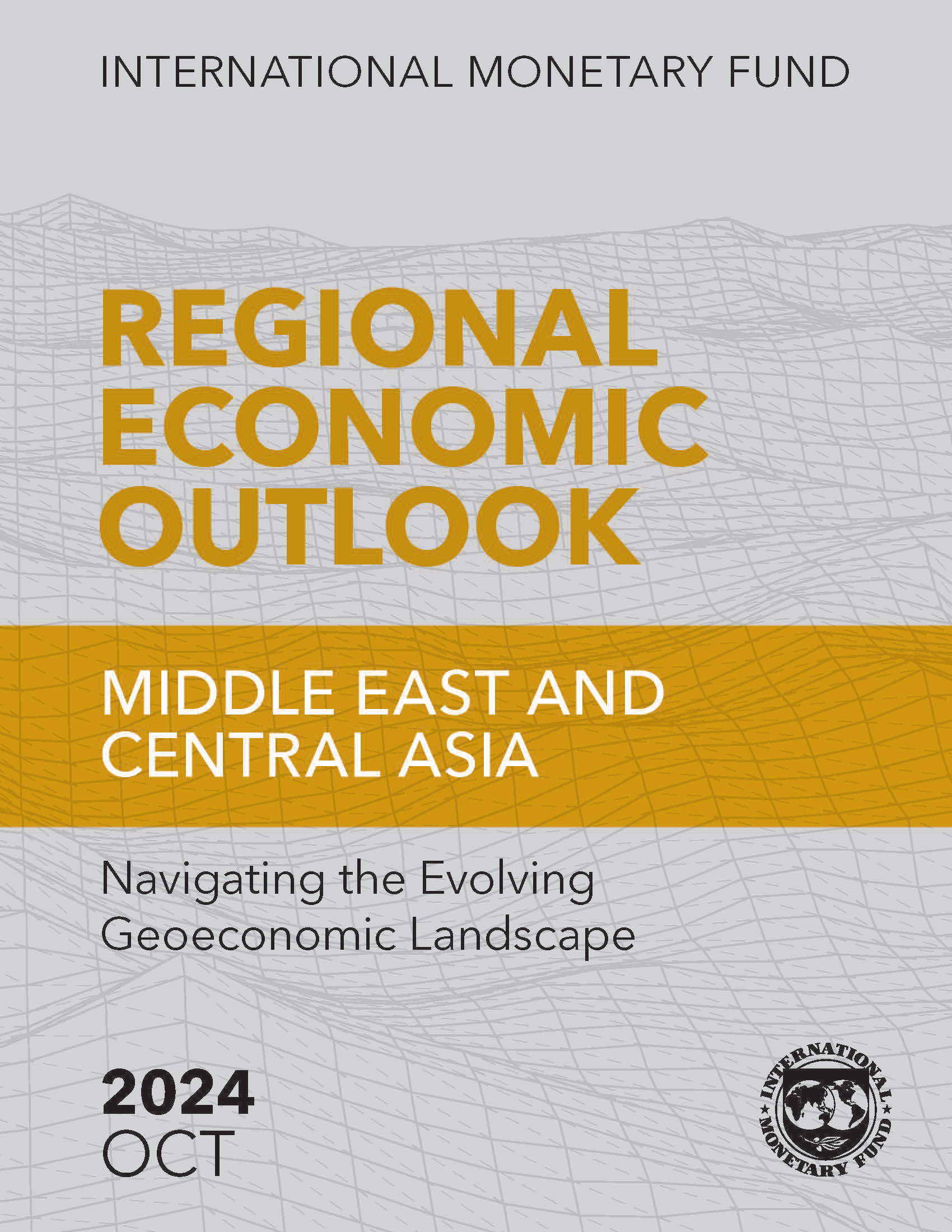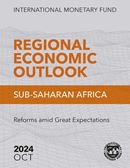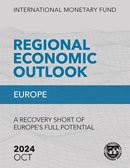Regional Economic Outlook
Sort by: Date Region
October 2024
Regional Economic Outlook for Asia and Pacific, November 2024 | Resilient Growth but Higher Risks
October 31, 2024
Description:
Short-term prospects for Asia and the Pacific have improved slightly compared to the IMF’s April forecasts, even though growth is still expected to moderate in 2024 and 2025. The regional growth projection for 2024 has been marked up to 4.6 percent from 4.5 percent in April, largely reflecting the over-performance in the first half of the year, and the region is forecast to contribute roughly 60 percent to global growth in 2024. In 2025, more accommodative monetary conditions are expected to support activity, resulting in a slight upward growth revision to 4.4 percent from 4.3 percent in April. Inflation has retreated in much of the region. At the same time, risks have increased, reflecting rising geopolitical tensions, uncertainty about the strength of global demand, and potential for financial volatility. Demographic change will act increasingly as a brake on activity, though structural shifts into high-productivity sectors such as tradable services hold promise to sustain robust growth.
Regional Economic Outlook for the Middle East and Central Asia, October 2024: Navigating The Evolving Geoeconomic Landscape
October 31, 2024
Description:
Navigating the Evolving Geoeconomic Landscape The global economic landscape faces significant challenges, including from geoeconomic fragmentation. In the Middle East and North Africa and Caucasus and Central Asia regions, economies are facing shifting trade patterns while also dealing with frequent shocks from conflicts and climate change. Moreover, medium-term growth prospects have deteriorated over the past two decades and are projected to remain subdued. Decisive reforms are needed to place countries on the path to a more resilient and inclusive economic future.
Regional Economic Outlook, Western Hemisphere, October 2024: Rebalancing Policies and Pressing on with Reforms
October 25, 2024
Description:
After successfully weathering a series of shocks, most countries in the region are converging to their (tepid) potential. Growth is expected to moderate in late 2024 and 2025, while inflation is projected to continue easing, although gradually. With output gaps mostly closed and inflation near target in most cases, policies should be rebalanced. Fiscal consolidation should advance without delay to rebuild buffers while protecting priority public investment and social spending. Most central banks are well placed to proceed with monetary easing, striking a balance between fending off the risk of reemerging price pressures and avoiding an undue economic contraction. Over the medium-term, growth is expected to remain close to its low historical average, reflecting long-standing, unresolved challenges. Pressing on with structural reforms will be key to boost potential growth and raise living standards.
Regional Economic Outlook for Sub-Saharan Africa, October 2024 | Reforms amid Great Expectations
October 25, 2024
Description:
Sub-Saharan African countries are implementing difficult and much needed reforms to restore macroeconomic stability, and while overall imbalances have started to narrow, the picture is varied. Policymakers face three main hurdles. First, regional growth, at a projected 3.6 percent in 2024, is generally subdued and uneven, although it is expected to recover modestly next year to 4.2 percent. Second, financing conditions continue to be tight. Third, the complex interplay of poverty, scarce opportunities, and weak governance--compounded by a higher cost of living and short-term hardships linked to macroeconomic adjustment--are fueling social frustration. Within this environment, policymakers face a difficult balancing act in striving for macroeconomic stability while also working to address development needs and ensure that reforms are socially and politically acceptable. Protecting the most vulnerable from the costs of adjustment and realizing reforms that create sufficient jobs will be critical to mobilize public support.
Regional Economic Outlook for Europe, October 2024: A Recovery Short of Europe’s Full Potential
October 24, 2024
Description:
Europe’s economy is recovering, benefiting from a strong crises’ response. Yet, the recovery is falling short of its full potential. Uncertainty about persistent core inflation, policy directions, and geopolitical conflicts, is dampening the near-term outlook. In the longer term, perennially weak productivity growth—a result of limited scale and business dynamism–-amid new headwinds from fragmentation and climate change are holding back growth potential.
April 2024
Regional Economic Outlook for Asia and Pacific
April 29, 2024
Description:

Growth in Asia and the Pacific outperformed expectations in late 2023, reaching 5.0 percent for the year. Inflation has continued to decline, albeit at varying speeds: some economies are still seeing sustained price pressures, while others are facing deflationary risks.In 2024, growth is projected to slow modestly to 4.5 percent. Near-term risks are now broadly balanced, as global disinflation and the prospect of monetary easing have increased the likelihood of a soft landing. Spillovers from a deeper property sector correction in China remain an important risk, however, while geoeconomic fragmentation clouds medium-term prospects. Given the diverse inflation landscape, central bank policies need to calibrate policies carefully to domestic needs. Fiscal consolidation should accelerate to contain debt burdens and debt service cost, in order to preserve budgetary space for addressing structural challenges, including population aging and climate change.
Regional Economic Outlook, Western Hemisphere, April 19th, 2024
April 19, 2024
Description: The Latin America and the Caribbean region has shown remarkable resilience in the face of recent global challenges, rebounding more strongly than expected from the pandemic. Growth is now moderating, from 2.3% in 2023 to 2.0% in 2024, as most economies are operating at potential. This moderation is also due to a weaker external environment and the ongoing impact of tight policies aimed at curbing inflation.
Regional Economic Outlook for Europe, April 2024 | Soft Landing in Crosswinds for a Lasting Recovery
April 19, 2024
Description:
A soft landing for Europe’s economies is within reach. Securing the baseline of growth with price stability will require careful monetary policy calibration. Faster fiscal consolidation would ensure buffers are adequate to tackle future shocks, while structural fiscal reforms would help address mounting long-term expenditure pressures. Beyond the near-term recovery, raising potential growth prospects calls for efforts at both the domestic and European levels. Measures should aim to raise labor force participation, prepare the workforce for looming structural shifts, set an enabling environment for private investment, and promote innovation on a level European playing field—especially when it comes to the green transition, including through a strong commitment to carbon pricing. Greater European integration would amplify the effect of these reforms. Formulating an ambitious set of growth-enhancing reforms should be a key priority of a new EU commission.
Regional Economic Outlook for Sub-Saharan Africa, April 2024 | A Tepid and Pricey Recovery
April 19, 2024
Description:
After four turbulent years, the outlook for sub-Saharan Africa is gradually improving. Growth will rise from 3.4 percent in 2023 to 3.8 percent in 2024, with nearly two thirds of countries anticipating higher growth. Economic recovery is expected to continue beyond this year, with growth projections reaching 4.0 percent in 2025. Additionally, inflation has almost halved, public debt ratios have broadly stabilized, and several countries have recently issued Eurobonds, ending a two-year hiatus from international markets. However, not all is favorable and risks to the outlook remain tilted to the downside. The funding squeeze persists as the region’s governments continue to grapple with financing shortages, high borrowing costs, and impending debt repayments. Amid the challenges, sub-Saharan African countries will need additional support from the international community to develop a more inclusive, sustainable, and prosperous future.
Regional Economic Outlook for the Middle East and Central Asia, April 2024: An Uneven Recovery amid High Uncertainty
April 18, 2024
Description:
An Uneven Recovery amid High Uncertainty The Middle East and North Africa and the Caucasus and Central Asia regions are positively impacted by the resilience of the global economy. Lower global commodity prices and vigilant policy responses have helped ease inflation in most countries. However, uncertainty and risks have risen amid ongoing conflicts, shipping disruptions, and reduced oil production. This is leading to an uneven recovery across the Middle East and Central Asia, with growth rates varying this year. Policymakers need to ensure economic stability and debt sustainability while navigating geopolitical risks and improving medium-term growth prospects. Amid high uncertainty, it is essential that countries implement reforms to enhance their fundamentals, including by strengthening institutions. Additionally, countries can seize potential economic opportunities amid shifting trade patterns by reducing long-standing trade barriers, diversifying products and markets, and improving infrastructure.










